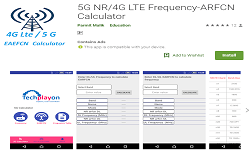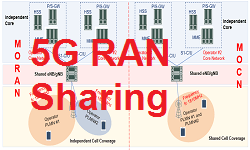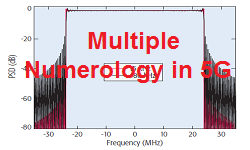5G NR Measurement Configuration: Meas Object, Report Config, Meas ID
During UE attach, after a radio bearer is set up, the eNB (in NSA Mode) or gNB (in SA Mode) delivers measurement configurations to the UE based on the mobility trigger and policy settings.
The measurement configuration can be included in the RRC Reconfiguration message or the RRC Resume message. It means that the network can update the measurement configuration for the UE while the UE is in a CONNECTED mode, resuming from INACTIVE to CONNECTED mode or provide a new measurement configuration in the handover command.
Measurement Configuration Characteristics
- The network (Base Station) may configure Measurement Configuration the UE to perform the following types of measurements
- NR measurements
- Inter-RAT measurements of E-UTRA frequencies
- The network may configure the UE to report the following measurement information based on SS/PBCH block(s) and CSI-RS resources
- Measurement results per SS/PBCH block
- Measurement results per cell based on SS/PBCH block(s)
- SS/PBCH block(s) indexes
- Measurement results per CSI-RS resource
- Measurement results per cell based on CSI-RS resource(s)
- CSI-RS resource measurement identifiers
The measurement configuration is structured with following items
- Measurement Objects (Meas Object)
- Reporting Configurations
- Measurement Identities (Meas ID)
- Quantity Configurations
- and Measurement gap configurations
These interrelations of these item is shown in following picture.

- Measurement Object (MeasObj): The reconfiguration provides a list of objects on which the UE shall perform the measurements for intra-frequency and inter-frequency.
- Measurement object indicates the frequency/time location and sub-carrier spacing of reference signals to be measured
- Associated with this measurement object, the network may configure a list of cell specific offsets, a list of ‘blacklisted’ cells and a list of ‘whitelisted’ cells. Blacklisted cells are not applicable in event evaluation or measurement reporting. Whitelisted cells are the only ones applicable in event evaluation or meas reporting.
- The meas Object Id of the MO which corresponds to each serving cell is indicated by serving Cell MO within the serving cell configuration.
- For inter-RAT E-UTRA measurements a measurement object is a single EUTRA carrier frequency.
Associated with this E-UTRA carrier frequency, the network can configure a list of cell specific offsets, a list of ‘blacklisted’ cells and a list of ‘whitelisted’ cells. Blacklisted cells are not applicable in event evaluation or measurement reporting. Whitelisted cells are the only ones applicable in event evaluation or measurement reporting
- Reporting configurations (ReportConfig): A list of reporting configurations where there can be one or multiple reporting
configurations per measurement object. Each reporting configuration consists of the following:- Reporting Criterion: The criterion that triggers the UE to send a measurement report. This can either be
periodical or based on Measurement Event - Reference Signal type: The RS that the UE uses for beam and cell measurement results (SS/PBCH block or CSI-RS).
- Reporting Format: The quantities per cell and per beam that the UE includes in the measurement report (e.g. RSRP) and other associated information such as the maximum number of cells and the maximum number beams per cell to report.
- Reporting Criterion: The criterion that triggers the UE to send a measurement report. This can either be
- Measurement Identities (MeasID): A list of measurement identities where each measurement identity links one measurement object with one reporting configuration. By configuring multiple measurement identities, it is possible to link more than one measurement object to the same reporting configuration, as well as to link more than one reporting configuration to the same measurement object. The measurement identity is also included in the measurement report that triggered the reporting, serving as a reference to the network.
- Quantity Configurations (QuantityConfig): The quantity configuration describes the filter coefficients for L3 filtering of the measurements. The quantity configuration defines the measurement filtering configuration used for all event evaluation and related reporting of that measurement type. For NR measurements, the network may configure up to 2 quantity configurations with a reference in the NR measurement object to the configuration that is to be used. In each configuration, different filter coefficients can be configured for different measurement quantities, for different RS types, and for measurements per cell and per beam.
- Measurement Gaps Configuration: Periods that the UE may use to perform measurements, i.e. no (UL, DL) transmissions are scheduled is decided by Meas Gap Configuration.
A UE in RRC_CONNECTED maintains a measurement object list, a reporting configuration list, and a measurement
identities list according to signalling and procedures in this specification. The measurement object list possibly includes NR intra-frequency object(s), NR inter-frequency object(s) and inter-RAT objects.
Similarly, the reporting configuration list includes NR and inter-RAT reporting configurations. Any measurement object can be linked to any reporting configuration of the same RAT type. Some reporting configurations may not be linked to a measurement object.
Likewise, some measurement objects may not be linked to a reporting configuration. The measurement procedures distinguish the following types of cells:
- The NR serving cell(s) – these are the SpCell and one or more SCells
- Listed cells – these are cells listed within the measurement object(s)
- Detected cells – these are cells that are not listed within the measurement object(s) but are detected by the UE on the SSB frequencies and subcarrier spacing(s) indicated by the measurement object(s)
For NR measurement object(s), the UE measures and reports on the serving cell(s), listed cells and/or detected cells.
Reference :
Related Posts:
- 5G NR RRM Measurement Requirements
- 5G NR Measurement – Serving Cell and Neighbor Cell
- 5G NR Measurement Events
- 5G NR RRM Measurement Requirements
- 5G NR Measurement Gap Configuration



